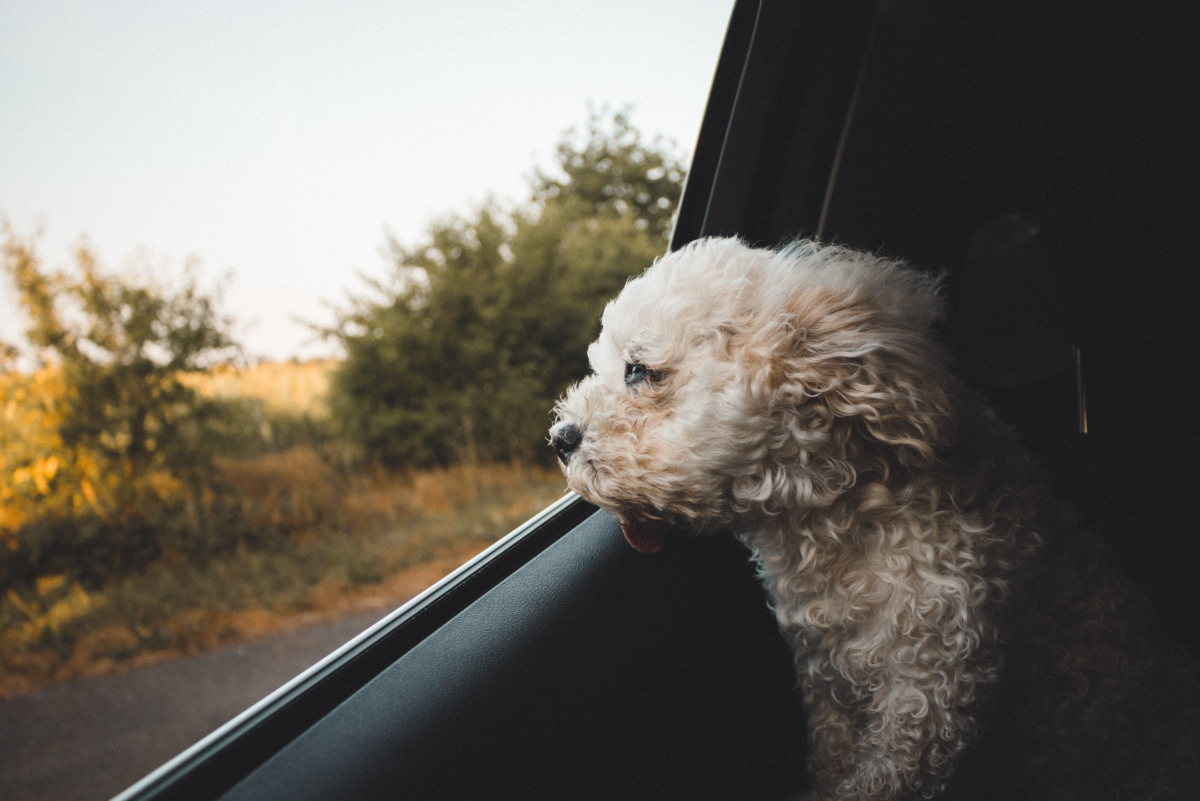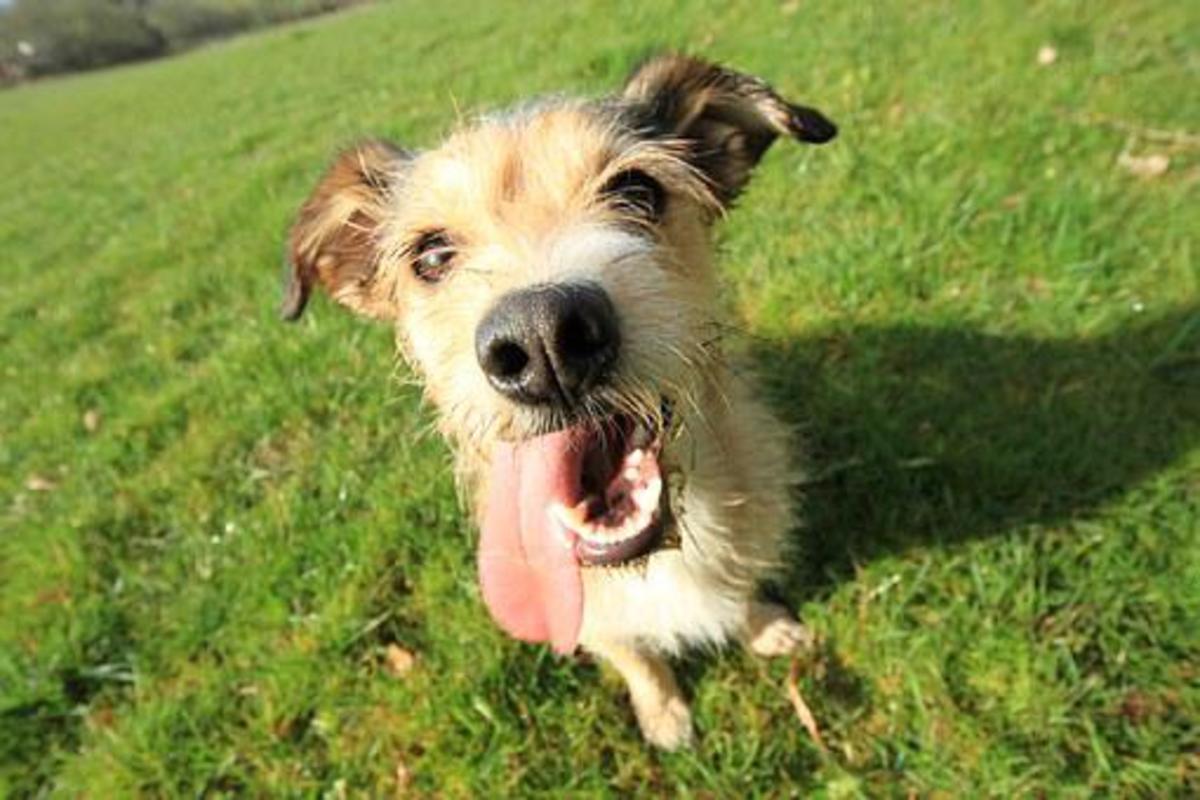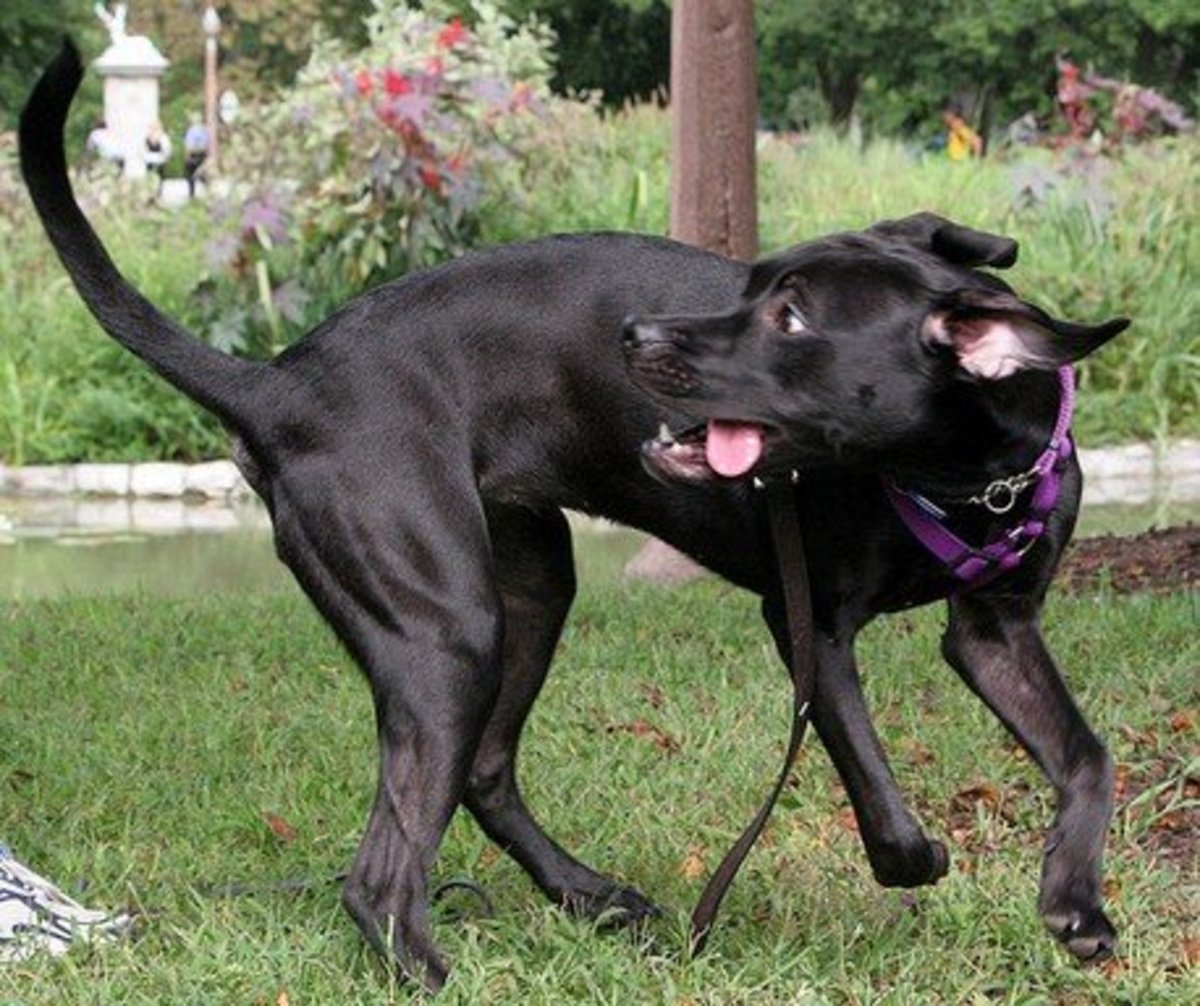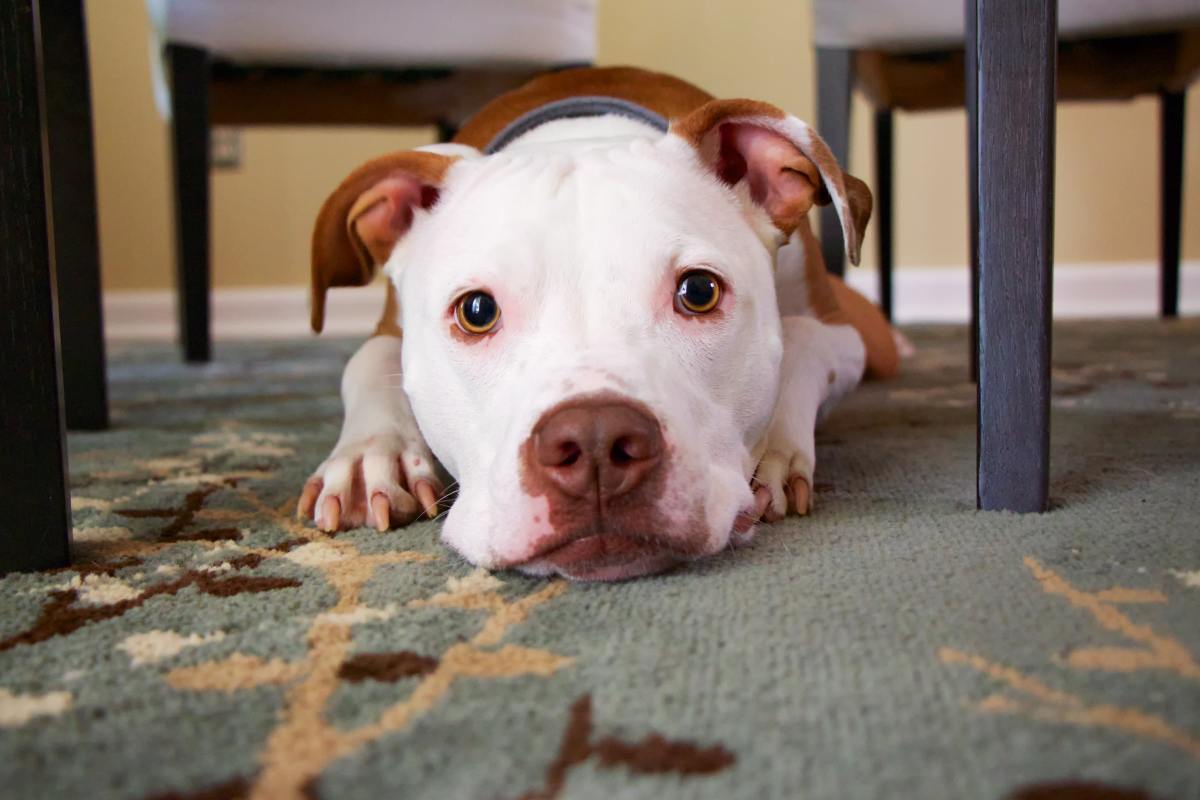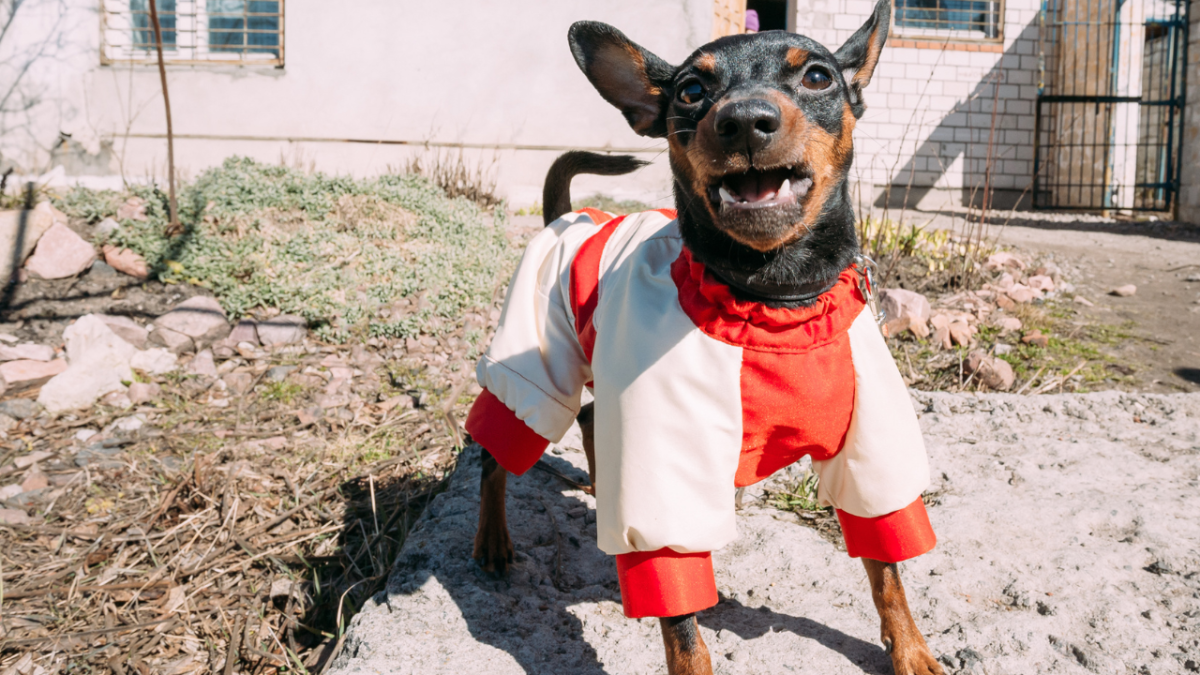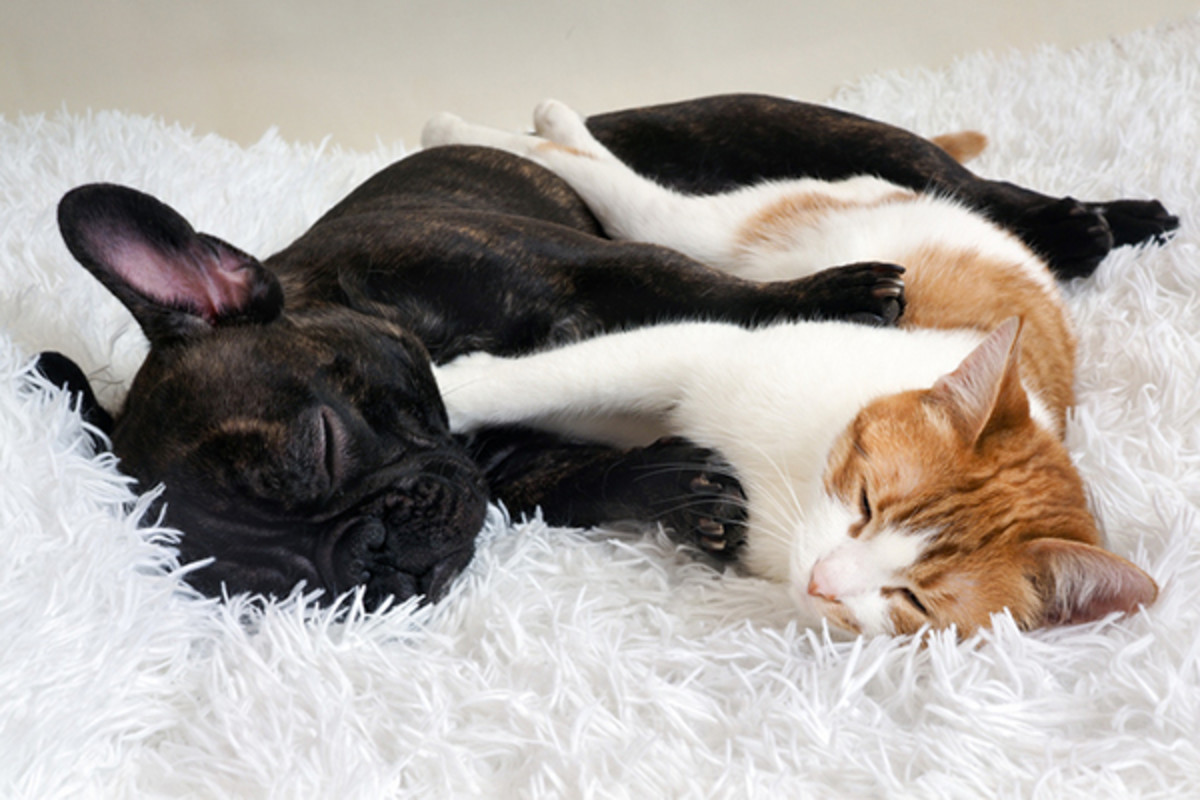How to Help an Anxious Dog
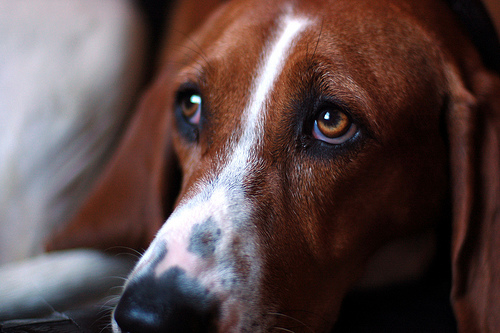
Often our instincts when confronted with a fearful dog, are to treat them like a fussy baby: give them lots of attention, assurance, a treat. However, this attention is rewarding negative behavior, and is likely to cause the dog to increase the frequency of their anxiety.
This article will highlight some easy, logical techniques that have worked wonders in keeping myself and my dog calm over the past 3 years.
Am I the Right Person to Own an Anxious Dog?
If you find that, due to genetics or his past owners, you have an anxious dog on your hands, you might consider if your household is conducive to helping the dog overcome her fears.
Some families are just more active and raucous than others, which, of course, is perfectly fine for a well-adjusted dog, but not so much for an anxious dog.
Although exercise is the #1 most important aspect of working with an anxious dog, do a reality check: if you yourself can't be calm, if you're always rushing around, tense, or irritable - an anxious dog might not be right for you.
Consider:
- Not adopting an anxious dog
- Placing your anxious dog with a quiet person, maybe a retired person who naturally moves more slowly and is home enough to give the dog lots of good, loving attention, while hiring someone to walk the dog.
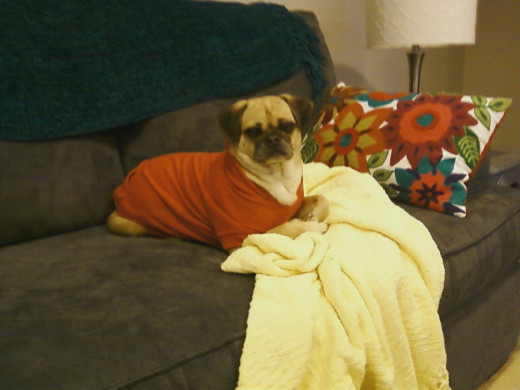
The Importance of Maintaining a Calm Atmosphere in Your Home
A big smack-in-the-face learning example for me was the day, a couple months into earning the trust of my anxious dog, I yelled at the cat for scratching the furniture. The cat, of course, just looked at me with a nonchalant, "Fiiine, I'll just wait until you're in bed to finish this" expression, but the anxious dog fled in panic and kept her distance and a wary eye on me the rest of the day. I felt terrible, as I'd lost the trust I had built up over the last couple months. I vowed to remain calm from that point on.

History Unknown
Often when adopting a pet, their history is unknown, as was the case with my puggle. However, if visiting a pet shelter or adopting a dog online, it's easy to tell if they are anxious. Spend one minute face-to-face with an anxious dog who cowers in the corner away from you, and you should be prepared for a long road to recovery.
In my case, I searched through the Mid Atlantic Pug Rescue (MAPR) website for over a year before deciding to adopt my pet. Her foster mom wrote a good review of her and was open and honest about her fears and limitations. Because I have a history of overcoming anxiety (pretty much), and because I telecommuted (was home all day), I felt that I could give her the consistent love and attention she needed to overcome her fears.
The only issue was that I had no idea of her history, I could only guess. Since she ran and hid every time I picked up an object, I can only guess that she used to be hit. As we got used to each other, I started identifying her fear triggers.
Identify your Dog's Fear Triggers
After adopting your anxious dog, spend some weeks or months identifying their fear triggers. In our case, my dog is afraid of people, especially men, and any movement, noise, or touch that she is not expecting, especially from behind.
Once you know their triggers, you can start the process of slowly and calmly addressing them, always with the attitude that you want them to have a better, happier, fuller life.
Interesting to me too is that my dog used to jump if the refrigerator door closed behind her, but she is quite docile during intense thunderstorms. I absolutely love thunderstorms, the louder and brighter, the better. Could it be that she is picking up on my attitudes toward the storm? I believe so, which leads me to try to set a good example of being openly welcoming to things she is afraid of.
Remove vs Expose
I have read a lot of advice from dog experts who recommend removing a dog from a stressful situation to a quiet room or place where the dog feels safe.
I respect dog psychologists, but I instinctively felt this was not in my dog's best interests. Myself, I have had to overcome serious anxiety issues, and whenever I 'hid out,' I felt better at the time, but then it was much harder and more traumatic to get back into the world; whereas, if I exposed myself to my fears a little bit each day, I got braver and was willing to do more and more.
There is, of course, a difference between fear and panic. When panicking, no one, human or dog, can think straight, so calming or distraction techniques (like playing or working on a new skill) won't help. In the case of panic, a brief respite to a quiet place, where you both can take a deep breath, is needed to restore focus. Then a bit of exposure can begin. But, again, you must be totally calm yourself for any of this to work.
Flexibility
One key to having a mentally healthy dog is to establish some structure and routine, which dogs interpret as safety and security. However, an overly structured, repetitive environment, day after day, can produce an inflexible dog who freaks out if there is any change in schedule or location. Your dog needs to feel secure, but also be flexible enough to experience new opportunities.
You can start out by feeding the dog in a different room every day, moving their bed around, sometimes playing music, sometimes not, the length and locations of their walks, just small variances in routine will help him stay flexible and open to new experiences like traveling and meeting new friends (human and pet).
Hire a Dog Walker if Necessary

Above All: Exercise
Before starting any kind of treatment plan for your dog, know that your chances for success and her continued, day-to-day stress levels are greatly impacted by the amount of exercise she gets. I note that when I can only squeeze in a walk around the block a couple times each day, my dog is antsy and whiney. Whereas when we walk to the dog park, she spends an hour running with the big dogs, then we walk home, she is completely relaxed the rest of the day, and the following treatments are much more effective.
Treatments
Following are treatments that work especially well for anxious dogs:
- Slow, long-term exposure
- Desensitization
- Counter-conditioning
With any of these techniques, manipulate the variables based on your dog's stress levels. If at any point she is overly scared, step back the treatment for a couple of weeks.
Recommended Reading
Let her come to the object
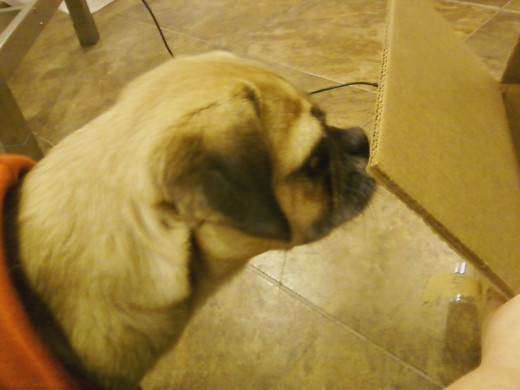

Slow, Long-term Exposure and Desensitization
Exposure and desensitization are normally used to treat phobias. Now that you've identified your dog's fear triggers, you can begin the slow process of progressive, repeated exposure with the aim of making them more comfortable around what they are afraid of.
Before you begin, assess yourself - are you totally calm (not just acting calm)? Your body language and tone of voice (low tones) both demonstrate to the dog that there is nothing to worry about.
In my case, when I want to expose her to a person, I normally pick her up so that we're not looming over her, and just chat with the person. Normally, she just turns head to the side and avoids looking at the person (a coping mechanism - pretend they're not there). Eventually, though, she faces the person and begins the sniffing. At this point, I ask the person to put the back of their hand a little ways from her nose, as she is very scent-oriented. Once she acknowledges the person and sniffs them, she gets a treat and lots of calm praise.
The key to this method is to do it over and over and over again, until she readily faces the person upon first sight. She now has a few men that she's pretty comfortable around, and endures a brief pet and accepts a treat. Hopefully, she will eventually generalize that feeling of safety to other men.
In the case of unexpected movements, at times, she has startled at the movement of my foot under the bed covers behind her. So, when she turns to see what the movement was from, I move my foot slowly again a couple times, then I slowly remove my foot from the covers and wiggle it near her. Now, she sniffs it and settles back down. (It's not a snake under the covers out to get her after all.)
I also use exposure in the case of noises. For instance, when a package is delivered to the door, she barks (which I tolerate because I want her to alert me to strangers - but that's the only situation in which she's allowed to bark). Anyway, she always used to be bothered by the new item in the house, and the loud noises involved in unpacking and then scrunching up packing materials to recycle. So, now when a package arrives, I slowly lower the box to her level, let her sniff it as long as she wants (after all, the contents are often for her). When she's done with that inspection, I quietly open the box (with a knife or scissors versus ripping) and let her smell each item I remove from the box: bubble wrap or paper packing materials, and the actual item I ordered. So now, rather than being afraid of new items arriving at the apartment, she is just curious.
If she jumps at an unexpected noise (usually behind her), I make sure she's watching then I calmly repeat the noise several times, so that she can see and sometimes sniff the cause of the noise. She now has logged most in-home noises into her memory and doesn't stir when they reoccur.
Counter-conditioning
This is another treatment designed originally for people, changing the variable from a negative to a positive, but can be used in conjunction with exposure and desensitization in dogs.
So, for instance, if every time my dog focuses on a man, at any distance (from the car, on a walk, or approaching a man to talk face-to-face), I speak encouragingly to the dog (quietly, "Yay, it's a man!) and give her a treat. This serves to counter her operant conditioning, whatever it is that originally made her afraid of men.
In the case of her becoming more familiar over time with the upstairs neighbor, I started handing him a treat, asked him to crouch down to her level, and offer the treat (several inches away from her nose). She started by backing off - no problem - no treat - no attention. Over time, she would sniff the neighbor and back off - no problem - no treat - no attention. Then the day she grabbed the treat and backed off quickly. Progress! But, still she's fearful, so no attention. Today, she takes the treat, doesn't back up, and even endures a scratch behind the ear or on the rump.
This is an example of counter-conditioning, where the variable (the man) changes from a negative to a positive.
Remember, be sure not to use operant conditioning in such a way that your dog associates comfort and treats with feeling nervous. This will only increase the negative behavior.
The results are exceptionally slow, but this isn't a race, just a chance to improve your dog's appreciation of the variety in life.
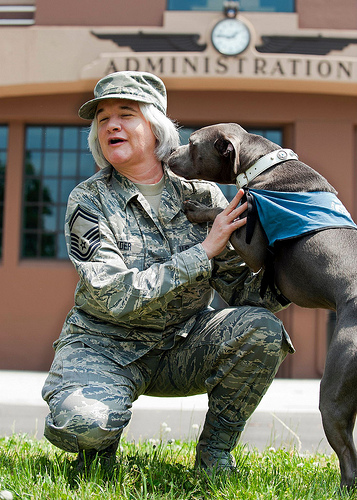
Separation Anxiety
Looking back, one aspect of her exposure that I think I missed was lengthy exposure. So, over three years, she only truly trusted me, kept a constant eye on me, was very sensitive to my behavior, and became clingy.
However, I recently moved back to where my extended family live, and my dog has been spending a considerable amount of time with her grandma - in her car, in her yard, and in her house. This took time, slow exposure, assurances from me, and complete calm from my mom (no fussing). She didn't have experience with fearful dogs (and now a clingy dog), but some quick tips really paid off (walks and toys: good; hovering and worrying: bad). Now my pet gets quite excited if I mention grandma, as in "Do you want to go see Grandma?" "Do you want to go for a ride in the car with Grandma?" (Of course, it could be the bit of peanut butter she licks off grandma's finger whenever we visit that she has associated with the person.)
Now, although, I'm told that she's whiny for a while after I leave her with my mother, she eventually settles down. I make no big deal of the departure, just wave, and say, "See you later!" and I'm off. No long, extended goodbyes - giving her the correct impression that it's no big deal.
This slow exposure and resultant loving behavior by my dog to my mom, proves to me that this technique (performed with a calm, trust-worthy person) does work. Perhaps there is a tiered effect where the dog trusts one person, then when that person exhibits trust in another person, the dog follows suit, and the pattern can continue.
The Reward
Over the past 3 years, my dog has gone from running and hiding whenever I raised my arm in any way (picked up the remote, answered my cell phone) to being comfortable in her surroundings, trusting that I won't hurt her, and taking on new discoveries.
She has also helped me to become a more relaxed person every day. I move more slowly, I pay attention to my posture (shoulders low), and breathe deeply. Even my doctor noted that my blood pressure is significantly lower.
So, hopefully, both of us will live long, low-stress lives.



